A sanctuary of serenity and spirituality in the heart of New Delhi, embodying grace, history, and the living teachings of Sikh Gurus.
Ever wondered about the tranquil oasis amidst the bustling streets of New Delhi?
Welcome to Gurdwara Bangla Sahib, not just an architectural marvel, but a beacon of faith and hope for millions.
Picture an elegant, white-marble oasis, where tranquility meets a rich tapestry of history and faith.
Imagine stepping into a realm where the air vibrates with soothing hymns and the spirit of selfless service uplifts you.


Open 24/7, welcoming everyone, regardless of faith or background.
Modest attire with heads covered as a sign of respect. Visitors are required to remove their shoes and wash their feet prior to entering.
Early mornings or late evenings for a more peaceful experience. The annual celebration of Guru Purab is a sight to behold.
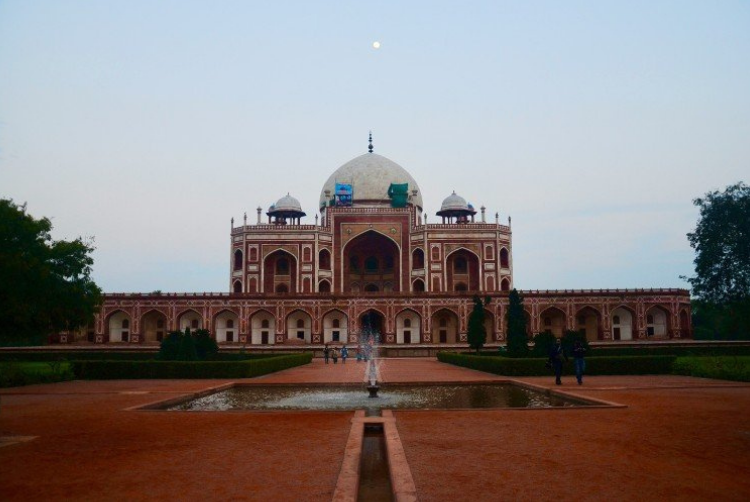
Explore the exquisite final resting place of Mughal Emperor Humayun, enveloped by historic gardens and architecture.
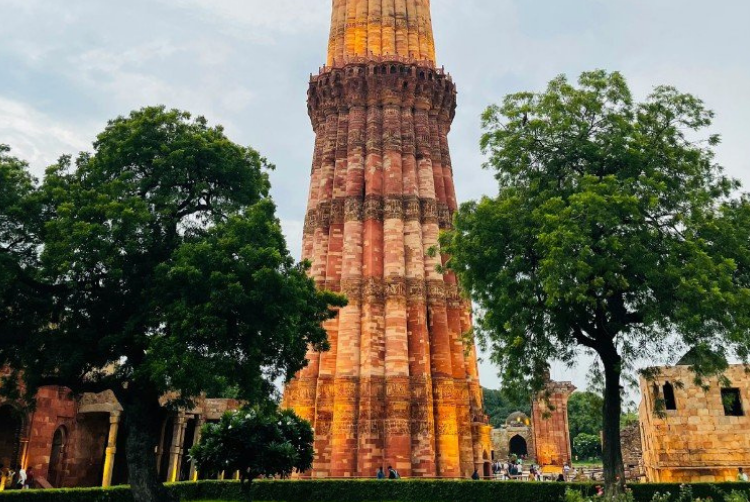
Marvel at the 73-meter high Qutub Minar, a testament to medieval India’s ingenuity and a UNESCO World Heritage site.

Enjoy a serene stroll through Lodhi Garden, where history blends seamlessly with nature, offering a quiet retreat.
Originally a bungalow belonging to Raja Jai Singh.
Its golden dome and tall flagpole (Nishan Sahib) are visible from afar.
This sanctuary is a testament of compassion, community, and teachings of the Sikh Gurus.

Offers an open door and an open heart to all.
Includes a pond, school, museum, and Langar Hall.
Transformed in memory of the eighth Sikh Guru, Guru Har Krishan.





The serene waters of the Sarovar (holy pond) at Gurdwara Bangla Sahib aren't just a symbol of purity; they're steeped in healing lore.
Legend has it that the eighth Sikh Guru, Guru Har Krishan, used these waters to cure an epidemic in 17th-century Delhi.
Today, visitors from around the world seek solace and healing by its banks, making the Sarovar a living testament to the Sikh belief in the power of faith and compassion.

The Langar, or community kitchen, at Gurdwara Bangla Sahib, operates on an epic scale, serving free meals to thousands daily, regardless of religion, caste, or creed.
This practice, initiated by the first Sikh Guru, Guru Nanak, exemplifies the Sikh principles of selfless service and communal unity.
The Langar is not just a meal; it's a divine feast where all are equal, and the spirit of generosity fills the air.
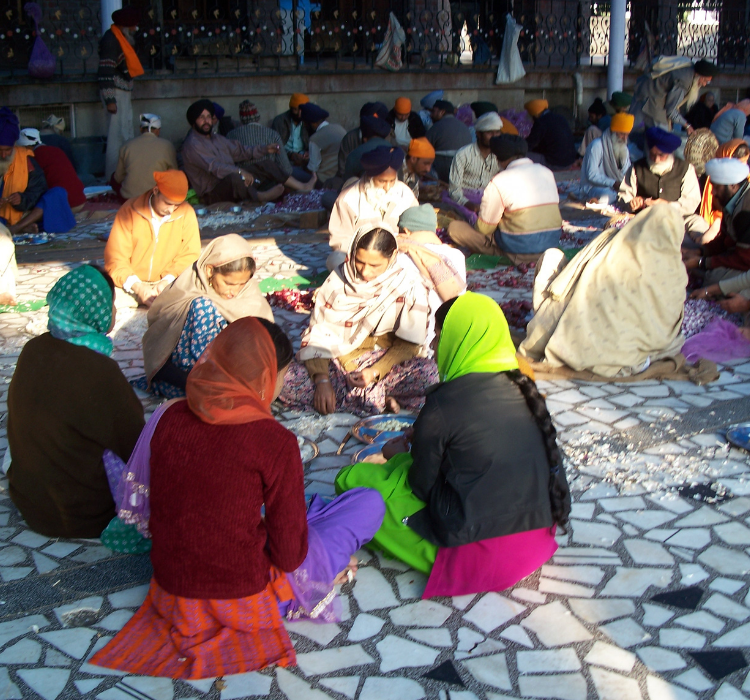
In a quiet corner of Gurdwara Bangla Sahib, a unique relic draws the faithful: a shoe belonging to Guru Har Krishan.
This humble artifact symbolizes the Guru's earthly journey and his compassionate service during Delhi's epidemic.
The preserved shoe serves as a poignant reminder of the Guru's humility and the enduring human touch in spiritual leadership.

Hovering above the Guru Granth Sahib inside Gurdwara Bangla Sahib is a magnificent golden canopy.
This radiant structure isn't just an architectural feature; it represents the eternal respect and honor accorded to the Guru Granth Sahib, the last living Guru in Sikhism.
The canopy's shimmering presence underscores the scripture's central role in guiding the faithful towards enlightenment and truth.

Adjacent to Gurdwara Bangla Sahib stands a tree, believed to be as old as the Gurdwara itself.
Pilgrims and visitors tie strings and cloths to its branches, a practice rooted in the faith that their prayers and wishes will be fulfilled.
This tree isn't just a part of the landscape; it's a living emblem of hope, faith, and the intertwined nature of human desires and divine grace.

The soulful sounds of the Jaltarang, a classical Indian instrument played using water-filled bowls, echo through the halls of Gurdwara Bangla Sahib round the clock.
This continuous hymn is a musical tribute to the Guru Granth Sahib, creating an ambiance of tranquility and spiritual resonance.
The 24-hour Jaltarang is a testament to the Gurdwara's commitment to keeping the spirit of devotion alive, every moment of the day.

Gurdwara Bangla Sahib's golden dome and towering flagpole (Nishan Sahib) are not just architectural marvels but symbols of the Sikh faith's resilience and sovereignty.
The dome, gleaming under the Delhi sky, serves as a beacon of hope and faith, while the flagpole stands tall, carrying the Sikh flag, which represents the community's pride, unity, and indomitable spirit.
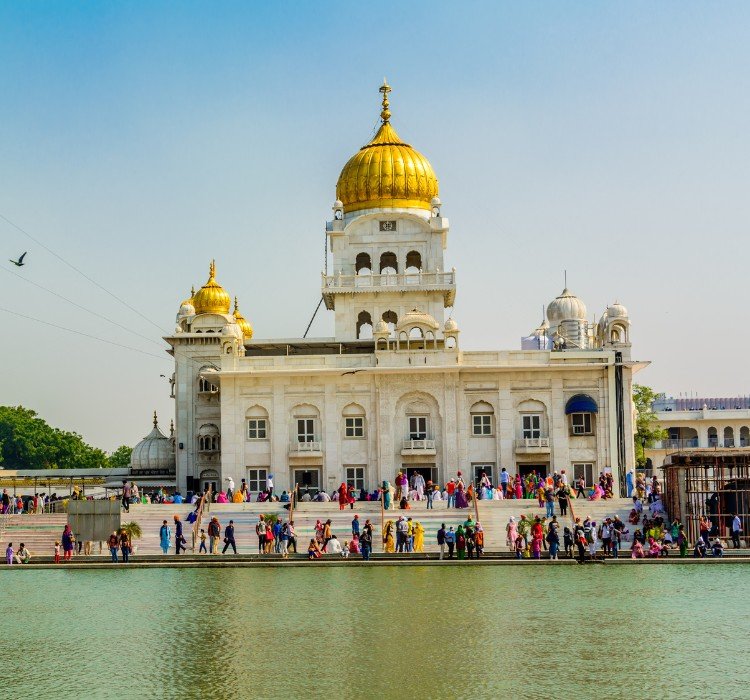
The preparation of Karah Prasad, a sweet, sanctified offering made from wheat flour, ghee, and sugar, is an art form at Gurdwara Bangla Sahib.
This sacred offering, distributed at the end of prayers, symbolizes the Guru's blessings.
The meticulous preparation and sharing of Karah Prasad reinforce the Sikh values of equality, sharing, and the sanctity of communal offerings.

Gurdwara Bangla Sahib’s origins trace back to a bungalow owned by Raja Jai Singh, a prominent Indian noble, which hosted the eighth Sikh Guru, Guru Har Krishan, during his visit to Delhi. The Guru’s compassionate acts, especially healing the sick during a smallpox epidemic, mark the beginning of this sacred site’s spiritual legacy.

Sikh General Baghel Singh captures Delhi, and recognizing the site’s historical and spiritual significance, initiates the establishment of a Sikh shrine at Jai Singh’s bungalow to honor Guru Har Krishan.

Sikh General Baghel Singh captures Delhi, and recognizing the site’s historical and spiritual significance, initiates the establishment of a Sikh shrine at Jai Singh’s bungalow to honor Guru Har Krishan.

The construction of the current Gurdwara structure begins, reflecting the site’s evolution from a historical bungalow to a prominent Sikh house of worship.

The completion of the Gurdwara’s main hall and the iconic golden dome, symbolizing the Sikh community’s resilience and dedication to their faith.
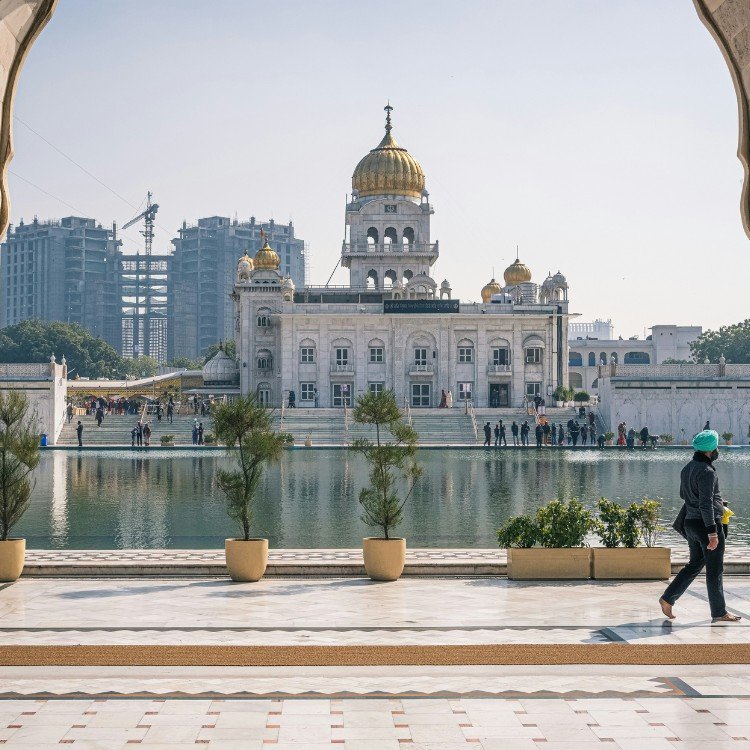
The completion of the Gurdwara’s main hall and the iconic golden dome, symbolizing the Sikh community’s resilience and dedication to their faith.

The Langar Hall, where free meals are served to all visitors, is expanded, embodying the Sikh principle of selfless service and community unity.
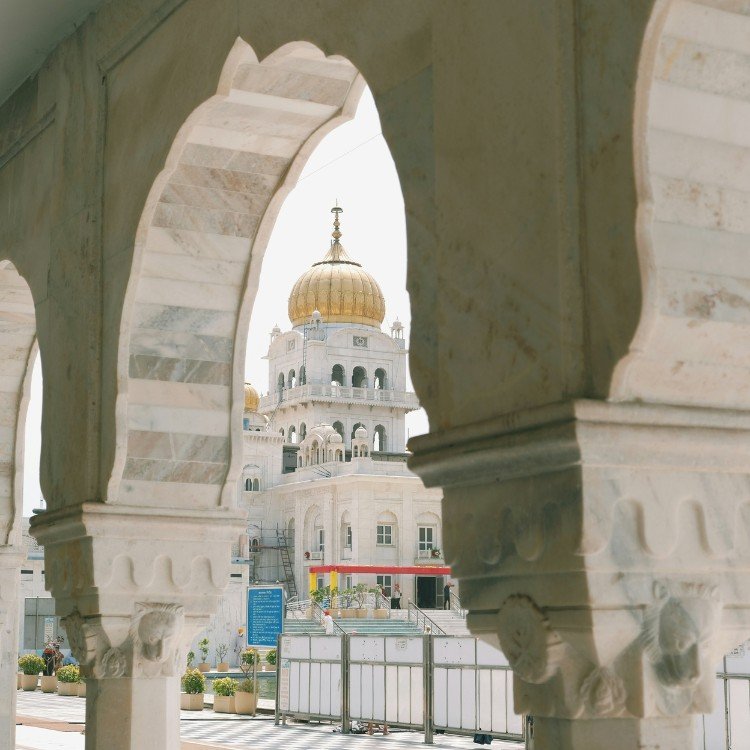
The establishment of the Sarovar (holy pond), believed to have healing properties, adds a serene and spiritual dimension to the Gurdwara, attracting visitors seeking solace and healing.

The establishment of the Sarovar (holy pond), believed to have healing properties, adds a serene and spiritual dimension to the Gurdwara, attracting visitors seeking solace and healing.

Renovation efforts enhance the Gurdwara’s infrastructure, including modern amenities, to accommodate the growing number of pilgrims and visitors.
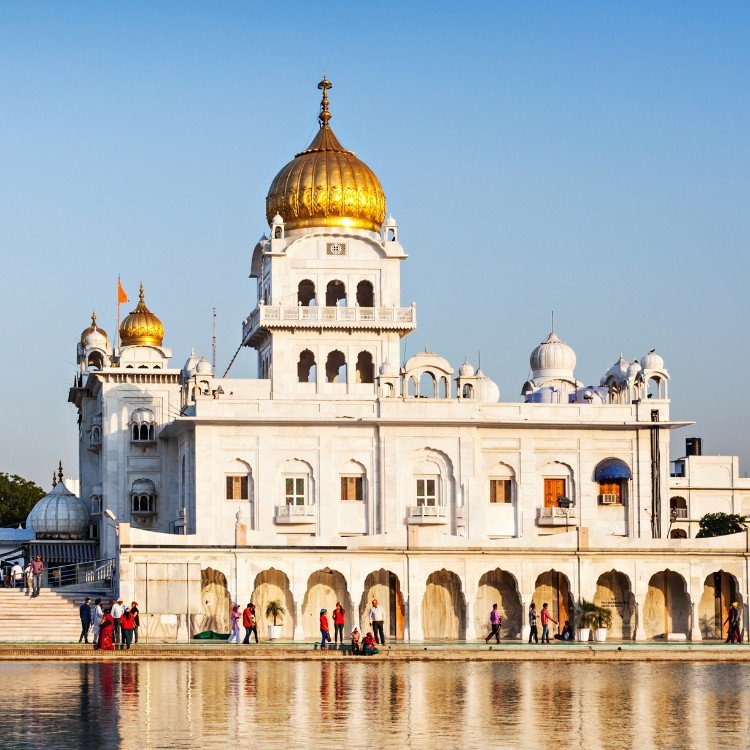
Approximately 150 Sikhs shelter in and guard the temple during anti-Sikh riots in New Delhi.

Approximately 150 Sikhs shelter in and guard the temple during anti-Sikh riots in New Delhi.

The inauguration of the Baba Baghel Singh Museum within the Gurdwara complex, offering insights into Sikh history and the Gurdwara’s evolution.

Gurdwara Bangla Sahib becomes a beacon of peace, spirituality, and community service in New Delhi, with millions visiting annually to partake in its tranquil ambiance, participate in Langar, and seek blessings.
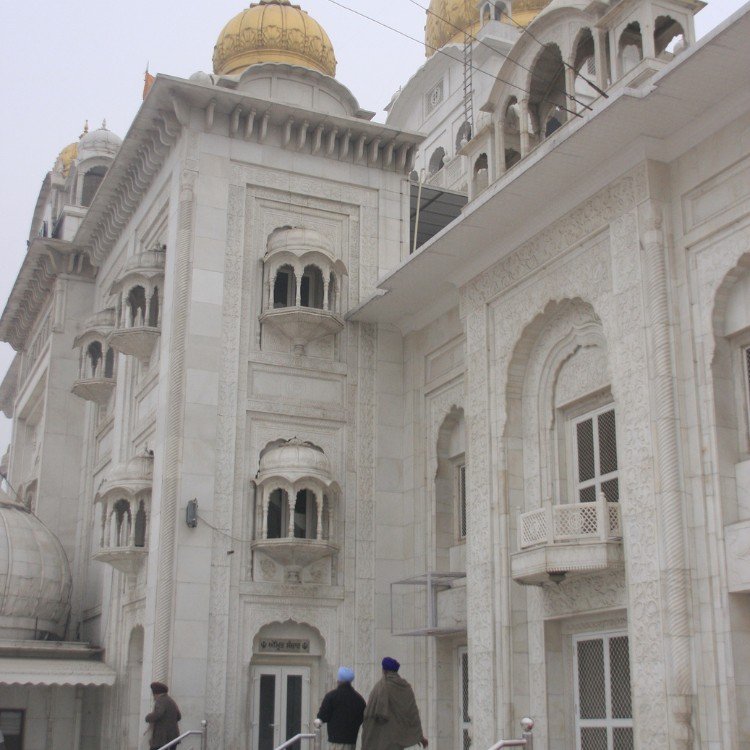
Gurdwara Bangla Sahib becomes a beacon of peace, spirituality, and community service in New Delhi, with millions visiting annually to partake in its tranquil ambiance, participate in Langar, and seek blessings.

The Gurdwara takes significant steps towards environmental sustainability, installing solar panels and implementing eco-friendly practices, reflecting the Sikh commitment to preserving God’s creation.
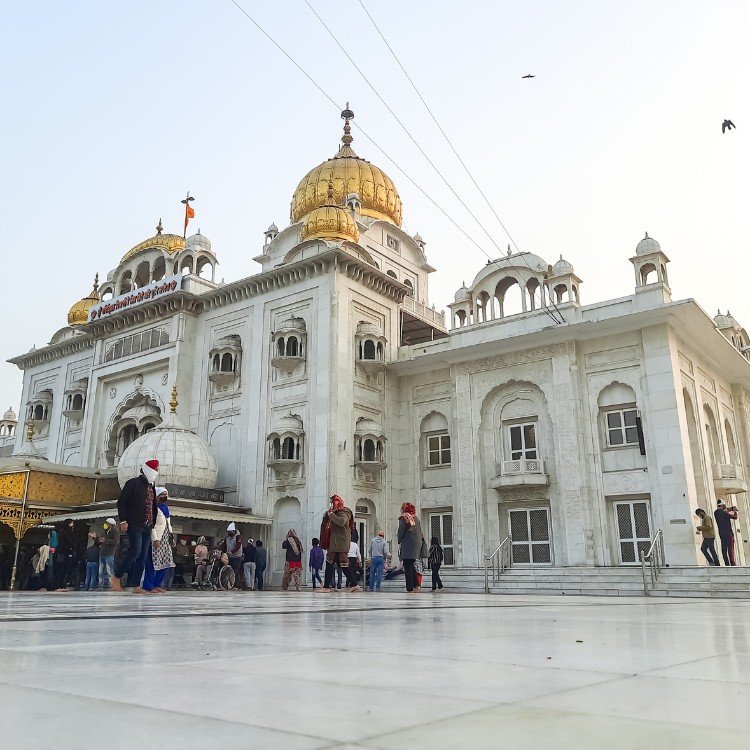

The origin of Gurdwara Bangla Sahib is woven with threads of compassion and healing, tracing back to the time of the eighth Sikh Guru, Guru Har Krishan.
Amidst a devastating smallpox and cholera epidemic in Delhi, the Guru extended his healing touch, offering solace and aid to the suffering.
The Gurdwara stands today on the very site of Raja Jai Singh’s bungalow, where Guru Har Krishan resided during his visit to Delhi, transforming the space into a sanctuary of hope and benevolence for generations to come.

As the Gurdwara evolved into a spiritual haven, its architecture and ambiance began to reflect its sanctity and significance.
The serene Sarovar (holy pond), believed to possess healing properties, and the sprawling courtyard became symbols of the Gurdwara’s role as a place of spiritual solace and communal gathering.
The harmonious blend of Mughal and Sikh architecture, with its magnificent golden dome and towering flagpole (Nishan Sahib), paints a picture of resilience and divine grace.
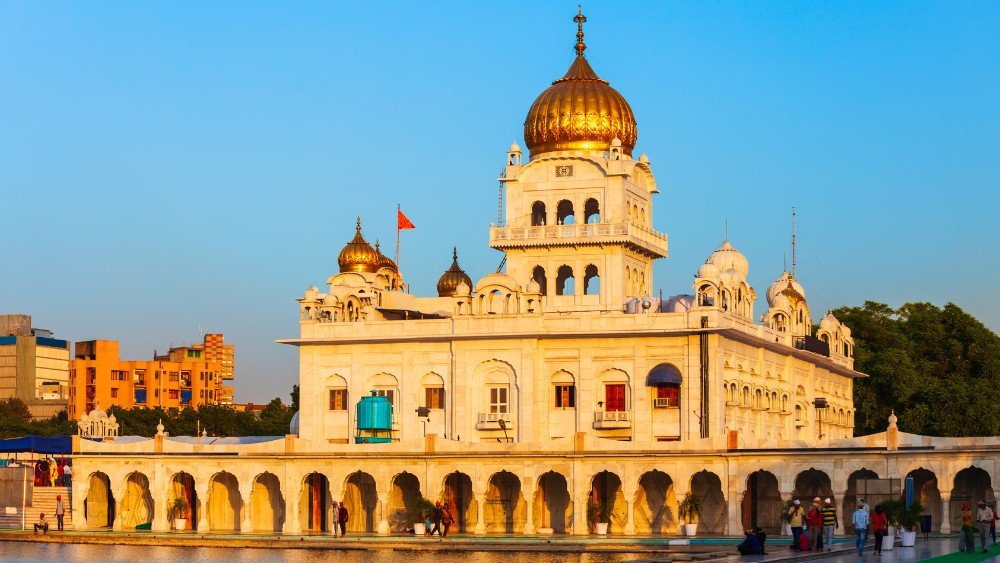
Central to Gurdwara Bangla Sahib’s ethos is the Langar, a community kitchen that embodies the Sikh principle of Seva (selfless service).
This tradition, initiated by the first Sikh Guru, Guru Nanak, ensures that no one who comes to the Gurdwara leaves hungry, offering a profound lesson in equality and generosity.
The practice of preparing and sharing meals transcends mere sustenance, fostering a spirit of unity and compassion among all visitors.
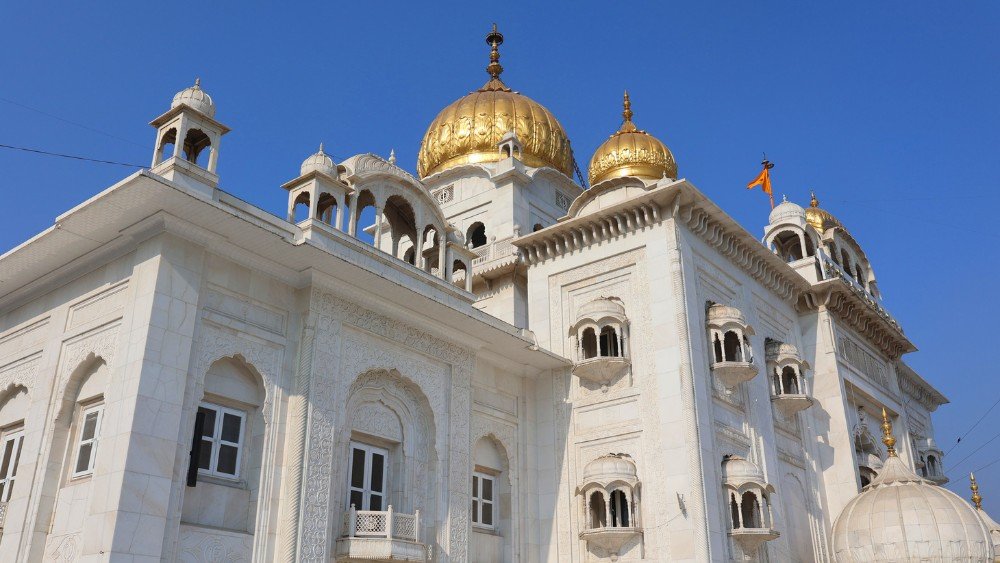
At the heart of Gurdwara Bangla Sahib, and indeed at the core of Sikhism, lies the Guru Granth Sahib, the eternal Guru of the Sikhs.
This sacred scripture, housed within the Gurdwara, offers guidance and enlightenment to all who seek it.
The daily readings and hymns resonate through the halls, inviting contemplation and connection with the divine, ensuring that the teachings of the ten Sikh Gurus continue to inspire and guide the community.
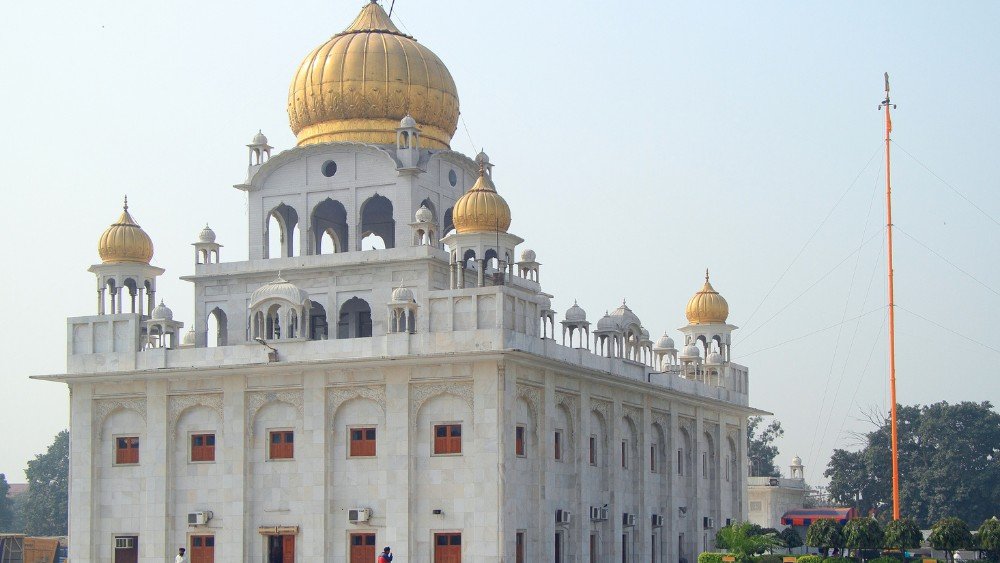
The artistic legacy of Gurdwara Bangla Sahib is evident in its intricate murals and frescoes that adorn its walls, each telling a story of faith, history, and devotion.
These artistic expressions not only enhance the spiritual ambiance but also serve as a visual narrative of Sikh history, reflecting the Gurdwara’s role as a custodian of Sikh cultural heritage.
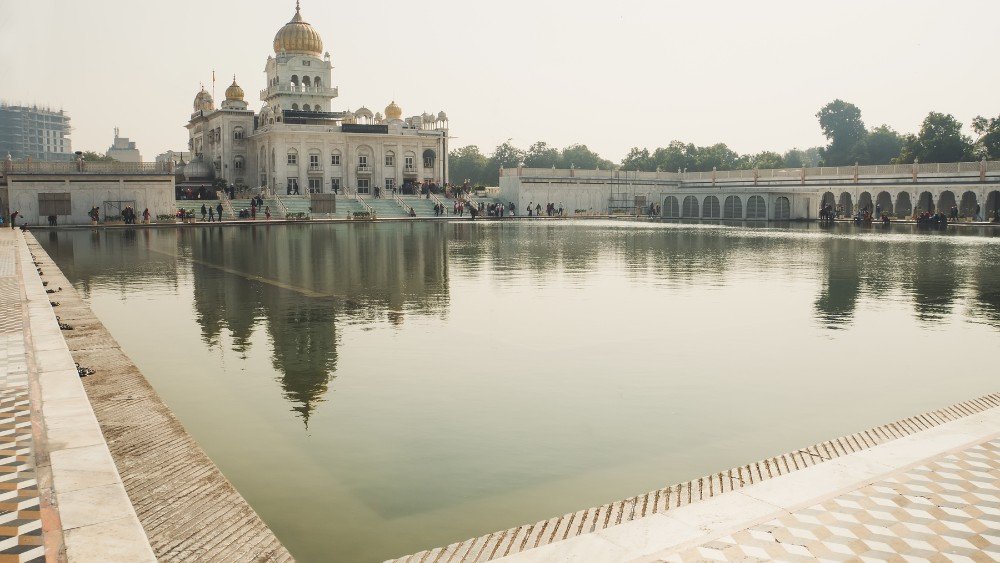
Over the years, Gurdwara Bangla Sahib has embraced modernity while preserving its historical essence.
The introduction of solar energy and eco-friendly initiatives reflects the Gurdwara’s commitment to sustainability and its role in addressing contemporary challenges.
These adaptations demonstrate the dynamic nature of the Gurdwara, evolving to meet the needs of the community while staying true to its spiritual roots.
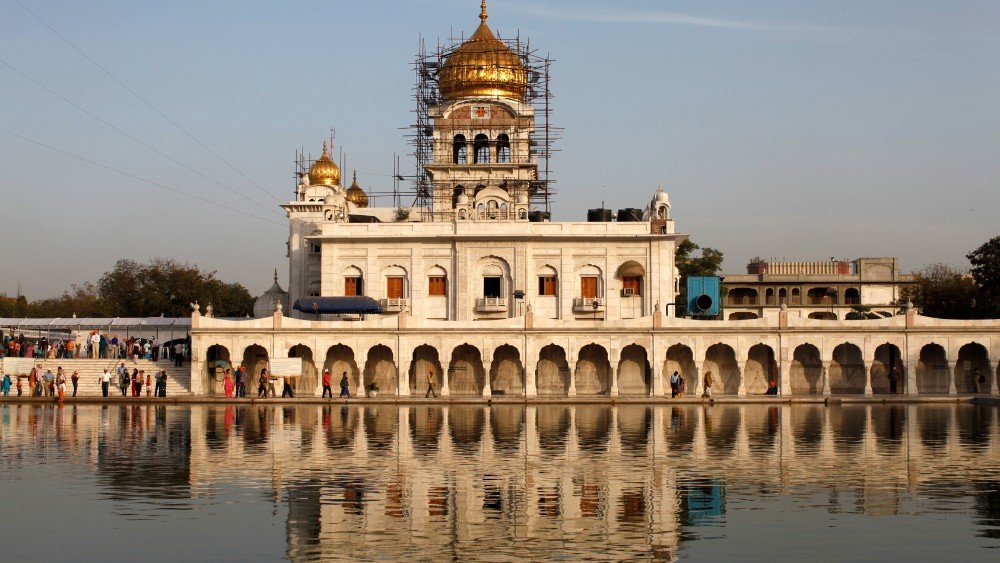
Gurdwara Bangla Sahib’s open doors symbolize the Sikh tenet of universal brotherhood, welcoming people from all walks of life to experience its tranquility and grace.
The Gurdwara remains a beacon of hope, a place where the soul finds peace, and the heart finds solace, transcending religious and cultural boundaries to offer a haven of spiritual nourishment.
Through the centuries, Gurdwara Bangla Sahib has emerged not merely as a site of religious importance but as a vibrant epicenter of cultural and spiritual life.
Its history is a mosaic of faith, resilience, and unwavering human spirit, inviting all to partake in its sacred legacy and continue the journey towards enlightenment and unity.
Contact Us
Copyright © 2025 Temples.org. All rights reserved.